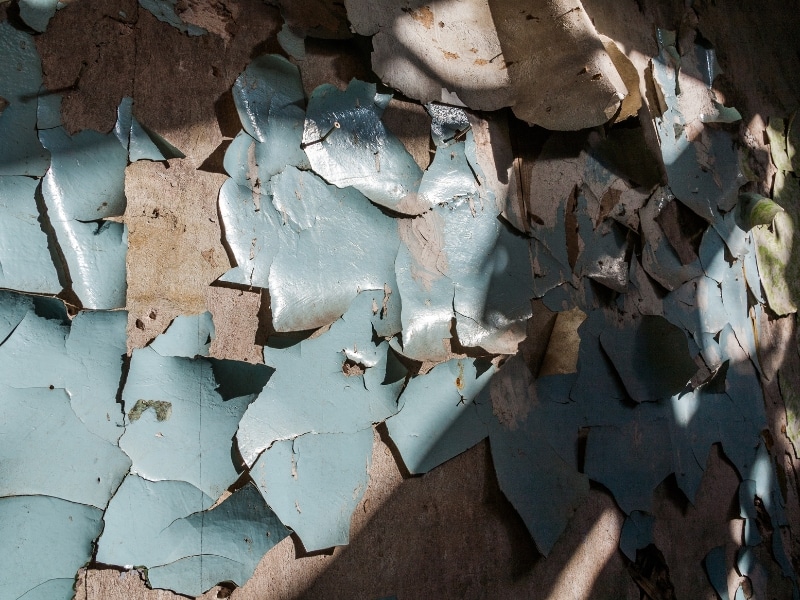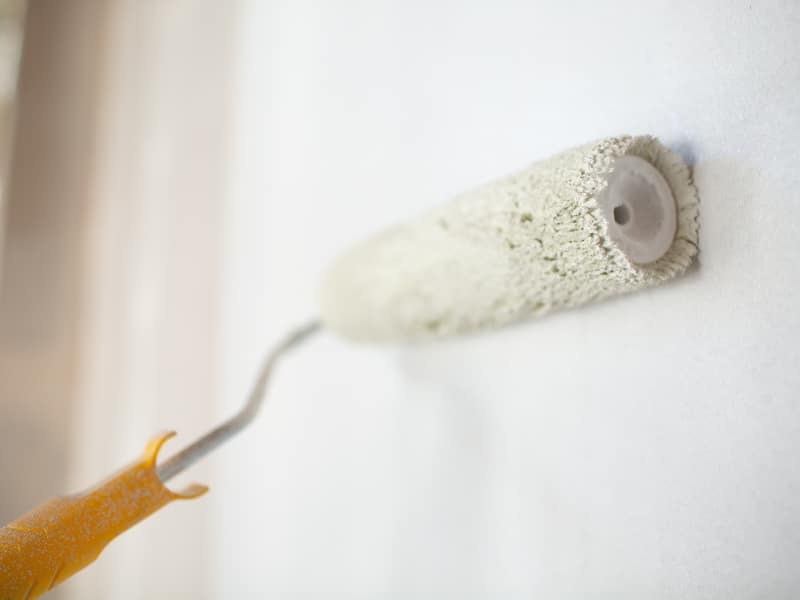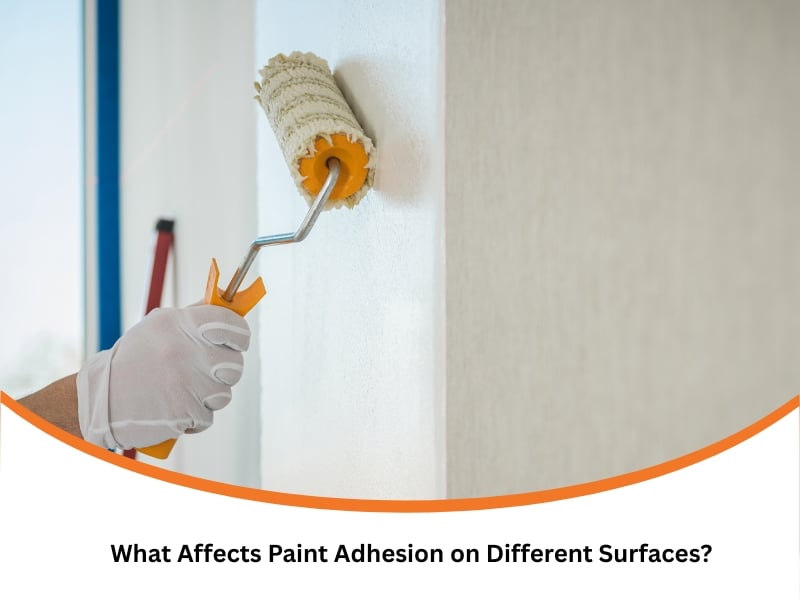Paint adhesion plays a critical role in the success of any painting project, whether you’re working with interior walls or exterior finishes. When paint fails to bond properly, it can lead to peeling, flaking, or a blotchy appearance, resulting in wasted time, effort, and money. From the importance of surface preparation to how various environmental or material factors affect adhesion, a range of conditions can impact your results. This article explores what affects paint adhesion across different surfaces and how to ensure a smooth, lasting finish.
Why won’t paint stick properly to some surfaces?
Some surfaces are more challenging than others when it comes to paint application. Even with top-tier paints, improper bonding often occurs when the surface itself isn’t suitable for adhesion. This can lead to early signs of peeling, bubbling, or paint that simply slides off. Understanding why this happens is the first step toward preventing it.
- Surface contamination: Dust, grease, and dirt create barriers to proper bonding.
- Glossy or sealed surfaces: Smooth materials prevent mechanical grip.
- Presence of moisture: Wet substrates compromise paint curing and bond strength.
- Mismatched paint types: Applying latex over oil-based paints without priming can cause peeling.
- Aging materials: Old surfaces, such as weathered wood or metal, may degrade paint adhesion due to surface instability.
Understanding these obstacles is essential for lasting results. To avoid adhesion issues, it’s helpful to discover reliable approaches to achieving a smooth paint finish tailored to the surface you’re working with.
What common mistakes weaken paint adhesion?
Sometimes the issue isn’t with the surface or product—it’s user error. Many painting problems stem from avoidable missteps during preparation or application. Knowing what to avoid can make a big difference in the longevity and appearance of your finish.
- Skipping or using the wrong primer: Primer creates the base layer for bonding.
- Painting over existing damaged paint: Peeling or chalky layers pull fresh paint with them.
- Overcoating too quickly: Rushing the process traps moisture, affecting cure times.
- Not checking compatibility: Using incompatible paint types can cause lifting.
Being mindful of these mistakes helps improve durability. That’s why understanding the importance of thorough surface preparation before painting is a smart first step in any project. A solid foundation ensures that your paint bonds as intended and holds up over time.
Could environmental factors impact paint adhesion?
Yes—what’s happening around your project site is just as critical as what’s happening on the surface itself. Temperature, humidity, and exposure to the elements all influence how well your paint bonds to a surface. Failing to account for these variables can ruin an otherwise well-prepared job.
- High or low temperatures can prevent proper curing and affect the finish texture.
- Humidity and condensation: Cause bubbling or mildew growth under paint layers.
- Wind and airborne debris: Blow dust or particles onto drying paint.
- Direct sunlight can lead to uneven drying and surface cracking.
Controlling the environment yields more consistent results. Equally important is identifying potential lead hazards before repainting, especially in older buildings where safety should be a priority. Protecting both your finish and your health starts with proper planning.

How can you prepare walls to avoid paint failure?
Even the best paint won’t stick to an unprepared wall. Proper preparation is the foundation of a successful painting project. It enhances surface receptivity and facilitates the paint to form a strong, long-lasting bond. Here’s how to do it right.
- Clean thoroughly: Use degreasers or detergent-based solutions to remove dirt and grime.
- Scrape or sand off loose paint to ensure new coats bond directly to the substrate.
- Patch damage: Repair holes and cracks with filler or joint compound.
- Prime accordingly: Match the primer to both the surface and paint type.
Preparation enhances bonding and improves longevity. A rushed or careless prep job often results in bubbling or peeling, even with high-quality paint. Taking the time to assess the surface condition and follow all the correct steps lays the groundwork for success.
Which steps can prevent paint from lifting or flaking?
Once the paint is applied, your job isn’t quite done. To ensure it lasts, you need to use techniques that promote adhesion and protect the paint layer during curing and daily exposure. These preventative steps are essential to a job well done.
- Follow the correct painting schedule: Allow ample time for drying and curing.
- Use high-quality products, as they often contain better binding resins and additives.
- Avoid painting in extreme weather conditions: Wind, rain, or heat can disrupt the drying process.
- Apply coats evenly: Excessively thick layers don’t adhere as well and are prone to peeling.
Good habits at every step reduce the risks of failure. For projects that matter, it’s worth learning about the importance of durable paints and how they support better adhesion and protection over time. Paint is not just colour—it’s the first line of defence against wear and exposure.

What role does surface type play in paint adhesion strength?
Every material responds differently to paint. Some absorb it, others resist it, and some require special primers just to accept it. Knowing how to treat each surface ensures the paint lasts as long as it should.
- Concrete or cement: Highly porous—use sealers to block absorption.
- Wood: Needs sanding and sealing due to grain and absorbency.
- Metal: Requires rust removal and a suitable metal primer.
- Vinyl or plastics often need specialised primers for bonding.
Recognising these differences ensures that appropriate preparation and product selection are made. Treating each surface with care helps prevent premature wear and unnecessary repainting. Don’t assume one approach fits all—every surface tells its own story.
How do you maintain strong paint adhesion over time?
Even after application, adhesion can weaken if surfaces are neglected:
- Regular cleaning prevents the buildup of grime that can break down the surface.
- Address water leaks or damp areas quickly: Moisture can lift paint off the substrate.
- Inspect annually: Look for early signs of cracking or bubbling.
- Recoat when needed: Don’t wait for major failures—minor maintenance pays off.
Maintenance prolongs the life of your paint and saves money in the long run. Protect your investment by keeping surfaces clean and sealing vulnerabilities as they arise. Touch-ups done proactively cost far less than full repainting caused by neglect.
Factor | Impact on Adhesion | Preventative Steps |
Dirty or glossy surfaces | High | Clean and sand before priming |
Poor environmental conditions | Moderate to High | Paint in ideal weather and protect curing zones |
Wrong paint type | High | Use compatible paints and appropriate primers |
Improper drying time | High | Follow label recommendations for drying/curing |
Substrate-specific needs | Moderate | Adjust prep method to match material type |
Final thoughts
Ensuring proper paint adhesion isn’t just a one-step task—it’s a series of well-planned decisions based on surface type, environment, and execution. When done correctly, it leads to lasting beauty, protection, and value. From identifying problem areas to prepping, painting, and maintaining, taking the proper steps is crucial for preventing premature wear and tear. For expert guidance, don’t hesitate to explore how Sydney Paintmasters can help with your next project.

